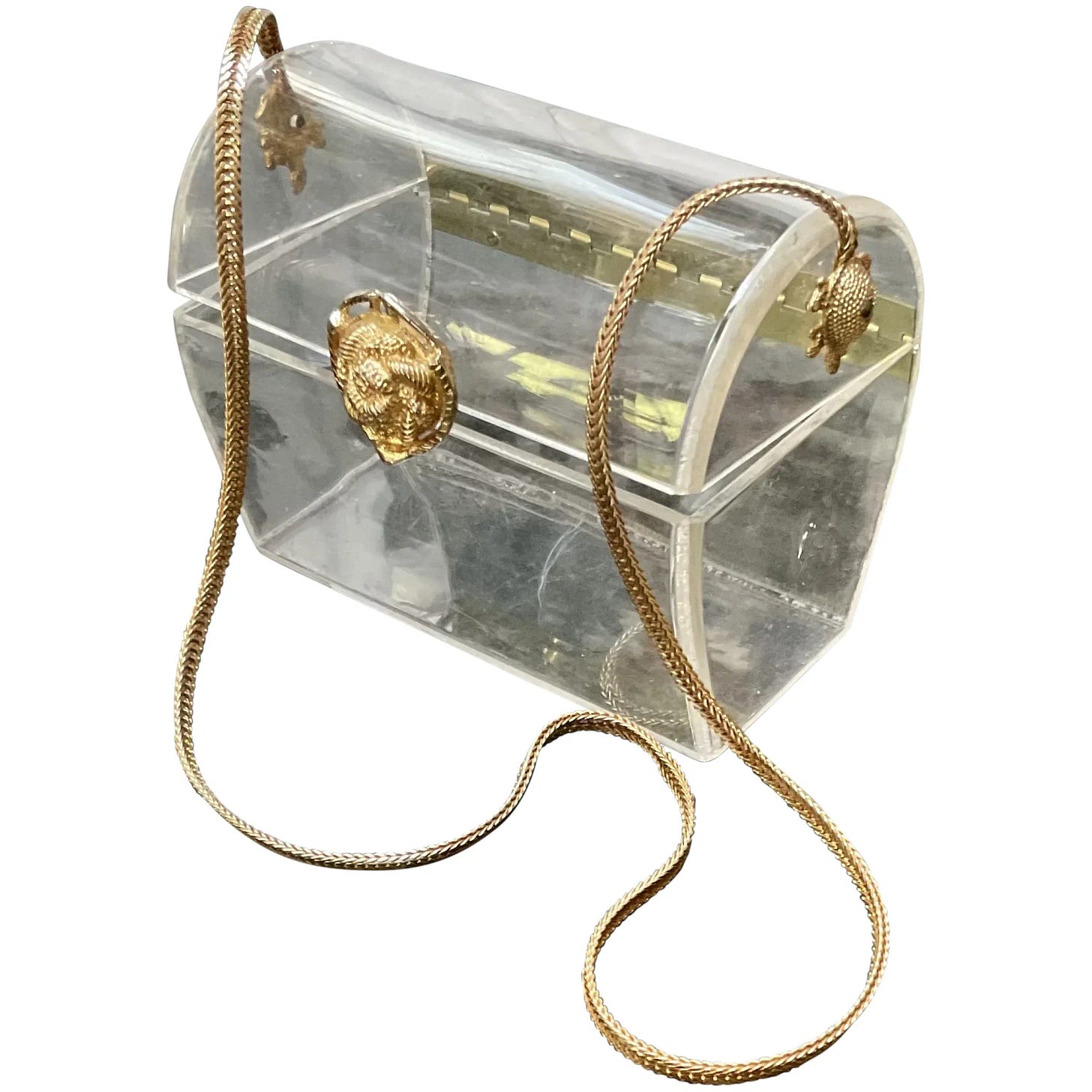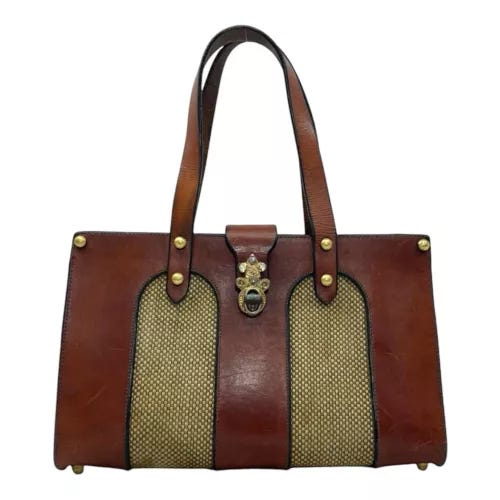The Hunt for Vintage Bags Continues
More bag brands that are defunct to find at your next thrifting excursion.
I must say considering I started this Substack in late August, I never thought people would be as excited as I am to basically talk about handbags—all the time. The response for my last Substack about vintage bag brands no longer with us received such a great response that I figured it was worthy of a follow-up. As a self-taught handbag historian, I have made it my business to try to absorb as much information about the “why” these brands were so popular during their tenure as retail brands, the reason for their popularity, and finally - why no one swooped up and acquired their name at least for any other reason but to continue the lineage they worked so hard to create.
If you have read my “History of Women’s Handbags,” then you know by now how much influence what was going on politically, as well as technologically, the impact it had on design. The market is good - then you will see bright colors, bigger bags with less organization, looser style, and whimsical novelty shapes. The market is bad, you will see less color, much more structure, silhouettes with a lot less bells and whistles. There is so much more about this, which I can cover in another story, but for now - let’s get started on this latest batch of brands and what makes it worth finding them.
Wilardy
Wilardy, a prominent New York manufacturer, was established in 1946 through a collaboration between Charles William Hardy and his son, William Hammond Hardy. Will Hardy initially began incorporating Lucite components from DuPont into handbag designs for his father’s company to replace materials like leather and metal, which were restricted during World War II, aka “The Handbag Tax.” After creating a Lucite jewelry box for buyers at Saks Fifth Avenue, they suggested adding a strap to transform the box into a handbag. This innovation marked Hardy’s foray into plastic purses and multiple patents. By 1951, Wilardy produced 64 Lucite handbag styles in 14 vibrant colors. Fun fact - Lucite is to acrylic glass as Kleenex is to tissue. As knock-offs flooded the market, Lucite became “un-chic” post-FET Tax repeal.
John Romain Handbags
Founded by John Romain, his eponymous handbags were a symbol of classic American style and rose to prominence in the 1960s and 1970s. John Romain Handbags were known for their distinctive combination of high-quality leather and woven fabric panels, paired with shapes and brass hardware, creating a signature preppy aesthetic that appealed to the collegiate and country club set. While the brand faded from prominence as fashion trends shifted, its legacy endures among vintage collectors who value its mid-century design and enduring appeal. I personally love this brand that did mixed materials way before Coach did.
Dorset-Rex
Founded in the 1950s by William Rex, Dorset-Rex Fifth Avenue became renowned for its innovative use of metal mesh, filigree, and Lucite. Many bags featured decorative clasps, handles, and frames, showcasing the brand’s commitment to artistry. Some designs incorporated Lucite bases or lids, adding a modern touch to the vintage aesthetic, making them a “luxury bag” sold at high-end department stores. By the 1970s, one can only assume that Dorset-Rex handbags likely shut down due to changing fashion trends, increased competition, the rise of new materials and styles, more casual fashion preferences, and the growing availability of cheaper, mass-produced goods from overseas manufacturers. Keep in mind this was a niche market, and bags in that area had no structure (see bell-bottom pants for reference.)
Bonnie Cashin for Coach
If anyone has heard me speak about this, Coach is the most prominent bag you will find at any flea market, thrift store, or vintage/second-hand shop. Dating pre-Reed Krakoff days of the “baseball mitt leather,” Bonnie Cashin was hired by Miles and Lillian Cahn as the first designer for Coach, a newly-formed women's accessory business, in 1962. As a division of their wholesale men’s accessory company, Gail Leather Products, Coach internally referred to the venture as "the Bonnie Cashin account," reflecting her status as a contracted designer rather than an employee. Cashin was originally a celebrated sportswear designer who designed uniforms for American Airlines and the military. Cashin designed two small collections for the Cahns each year to complement her garment designs for other manufacturers until 1974. In 1975, Meyers Manufacturing took over the production of her signature handbag designs, i.e., designs were brought in-house. Something we know all too well in this market.
Dofan of France
Dofan of France, or Dofan Handbags, established in 1929, was a high-end French handbag manufacturer renowned for its luxury designs and quality craftsmanship. The company was founded by four individuals—Emeric, Albert, Armand, and Zoltan—who were likely brothers, given the use of their first names on a commemorative medallion. Dofan gained prominence for its exotic leather handbags featuring innovative designs. By the early 1960s, the company had expanded internationally, with a shop in New York City. Despite its eventual closure, Dofan of France remains a hot ticket item on Poshmark, Etsy, and eBay.
“How to Manufacture a Handbag” with Nicole Levy from Baikal Handbags on Handbag Designer 101 Podcast












I have the tweed leather handbag.. Doctor handbag.. great condition..price please..
Like